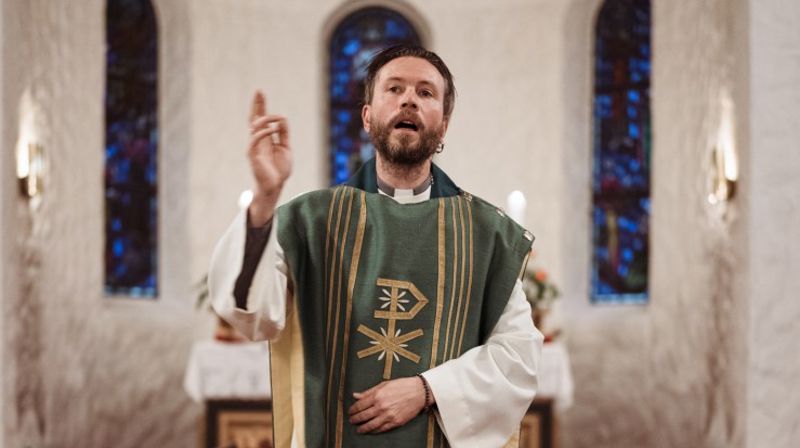Every congregation has its own, local order of worship. There is a common pattern, based on the church’s liturgical heritage. We gather. We encounter God’s word. We pray together for the church and the world. We worship God. We share the meal at the Lord’s table. And we are sent into the world. In some services, the order of worship might be shorter.
How is a worship service in the Church of Norway?
Every congregation in the Church of Norway has established a local order of worship. The liturgical tradition is the starting point for all local orders of worship. A regular mass includes:
- Gathering
- The word
- Intercessions
- Holy Communion
- Sending
The two main elements in a Christian worship are the Word, which relates back to the synagogue worship, and the Holy Communion, which relates to Jesus’ last supper with the disciples. The order of worship has developed around these two elements. The Gathering points in the direction of the Word, and the Sending leads us from the table of communion out into service in the world. In the middle of the worship service, as a bridge between the Word and the Holy Communion, we find prayers and intercessions for the church and the world.
Read more about the worship service in the Church of Norway
Liturgy, from the Greek "leitourgia", meaning “public work”, is the most commonly used name for religious ceremonies. The Christian worship liturgy expresses the faith in and worship of the Triune God.
Often, the word liturgy is used about the fixed elements in a worship service. The liturgical character of a worship service shows that it is in a way a ritual.
As a ritual, a worship service is related to a play or dance or drama/theatre. Every participant has a task or a role, and everything that happens is part of a sequence or an order. As with a play or theatre, a distinct reality is created in the worship service, in the liturgical space. Thus, the liturgy can help us understand what is actually not understandable. It helps us interpret and relate to God’s presence and the mystery of salvation.
Our different roles in the worship service have roots back to the beginnings of the Christian worship. Everybody had their own “liturgy”: as leaders (bishops), elders (pastors), prayer men and women, deacons and preachers. As the centuries passed, there was a development in the church toward a stronger “professionalization”. The distinction between clergy and lay people become stronger, and the liturgies became so complex that they could only be held by trained priests and musicians, while the lay people remained passive observers.
Still, the central parts of the liturgy, as celebrated by the first generations of Christians, remained and continued through the centuries. The churches in the world today therefore have a common heritage to base their liturgies on. Currently, there is a growing movement to rekindle a worship service where the whole congregation actively takes part.
The Church of Norway is part of this movement, which has illustrated the common heritage and identity of the whole worldwide church.

